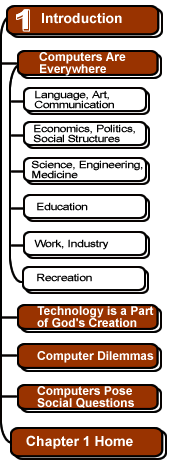

Computers in Recreation
| Recall the noted Dutch historian of culture Johan Huizinga, who depicted play as "voluntary activity," which we as homo ludens—man the player—engage in according "to rules freely accepted but absolutely binding," an activity carrying the "consciousness that it is 'different' from 'ordinary life'." Huizinga's incisive remarks point to a deeper, intellectual and cultural significance of play as an activity permeating today's information technology. Computers are enormously powerful information-processing machines; they are also, culturally speaking, toys. (No surprise: computer games and amusements still command the lion's share of the technology's mass-market sales.) When we "play" with them we follow freely the "absolutely binding," logical rules of information processing, which epitomizes play activity. Moreover, as play, this rule-governed activity justifies itself; it needs no further rationale. We engage in it simply because "it is there," and because we have the ability to do so. Therein, at least in part, dwells the perception of fun as the psychological companion of computer play: the captivation, the tension, the enjoyment, and the awareness of play's difference from "ordinary life" that Huizinga observed. Michael
E. Hobart and Zachary S. Schiffman, |
These pages were written by Jeffrey L. Nyhoff and Steven H. VanderLeest
and edited by Nancy Zylstra
© 2005 Calvin University (formerly Calvin College), All Rights Reserved.
If you encounter technical errors, contact computing@calvin.edu.